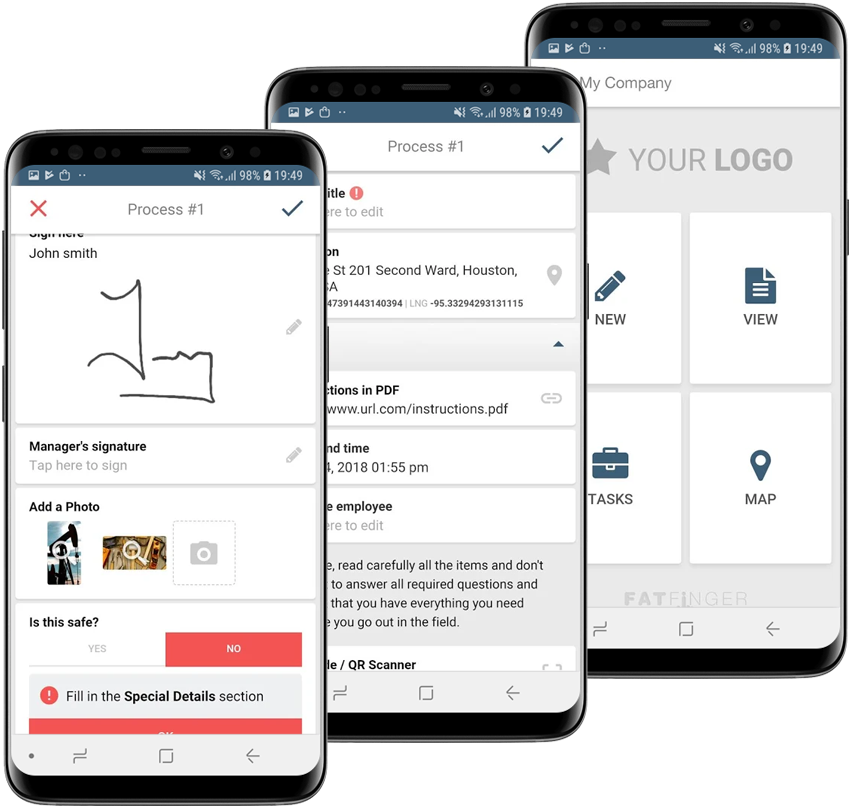In the high-stakes world of oil and gas, safety is paramount. The National Fire Protection Association (NFPA) 58, also known as the Liquefied Petroleum Gas Code, plays a crucial role in ensuring safety standards are met.
This article delves into the significance of NFPA 58 in oil and gas safety, providing valuable insights and practical solutions to enhance compliance and safety measures. Request a demo of FAT FINGER to see how digital workflows can streamline your safety processes.
Understanding the Liquefied Petroleum Gas Code (NFPA 58)
NFPA 58 is a comprehensive set of guidelines designed to minimize the risks associated with the storage, handling, transportation, and use of liquefied petroleum gas (LPG). These guidelines are essential for preventing accidents and ensuring the safety of personnel and property in the oil and gas industry.
Key Components of NFPA 58
NFPA 58 covers a wide range of safety aspects, including:
- Storage and handling of LPG
- Design and installation of LPG systems
- Inspection and maintenance requirements
- Emergency response procedures
By adhering to these guidelines, companies can significantly reduce the risk of accidents and ensure a safer working environment.
The Importance of Compliance
Compliance with NFPA 58 is not just a legal requirement; it is a critical component of a company’s safety culture. Non-compliance can lead to severe consequences, including accidents, injuries, and financial losses.
Case Studies Highlighting the Importance of Compliance
Several incidents in the oil and gas industry underscore the importance of adhering to NFPA 58 guidelines. For example, a 2013 explosion at a propane facility in Florida resulted in multiple injuries and extensive property damage. Investigations revealed that non-compliance with NFPA 58 was a significant contributing factor.
In contrast, companies that strictly adhere to NFPA 58 guidelines have reported fewer incidents and improved safety records. This demonstrates the tangible benefits of compliance in enhancing safety and reducing risks.
Challenges in Implementing NFPA 58

Despite its importance, implementing NFPA 58 can be challenging. Companies often face difficulties in ensuring that all employees are aware of and adhere to the guidelines. Additionally, maintaining up-to-date records and conducting regular inspections can be time-consuming and resource-intensive.
Common Challenges
- Lack of awareness and training among employees
- Difficulty in maintaining accurate records
- Time-consuming inspection and maintenance processes
- Ensuring consistent compliance across multiple sites
FAT FINGER: A Digital Solution for Liquefied Petroleum Gas Code (NFPA 58) Compliance
FAT FINGER offers a powerful digital solution to address these challenges. By leveraging digital workflows, companies can streamline their safety processes and ensure consistent compliance with NFPA 58 guidelines.
You can build these digital workflows on FAT FINGER:
Take 5 Safety
The Take 5 Safety checklist on FAT FINGER allows employees to quickly assess potential hazards before starting a task. This proactive approach helps identify and mitigate risks, ensuring a safer working environment.
Near Miss Reporting
Near miss reporting is crucial for identifying potential hazards and preventing future incidents. FAT FINGER’s Near Miss Reporting checklist makes it easy for employees to report near misses, ensuring that corrective actions are taken promptly.

Job Hazard Analysis
Conducting a Job Hazard Analysis (JHA) is essential for identifying and mitigating risks associated with specific tasks. FAT FINGER’s JHA checklist provides a structured approach to hazard identification and risk assessment, ensuring that all potential hazards are addressed.
Risk Assessment
Risk assessments are a critical component of NFPA 58 compliance. FAT FINGER’s Risk Assessment checklist helps companies systematically evaluate risks and implement appropriate control measures, ensuring a safer working environment.
Incident Reporting
Timely and accurate incident reporting is essential for identifying trends and implementing corrective actions. FAT FINGER’s Incident Reporting checklist streamlines the reporting process, ensuring that all incidents are documented and addressed promptly.
Journey Report
In the oil and gas industry, transportation of LPG poses significant risks. FAT FINGER’s Journey Report checklist helps companies monitor and manage the transportation process, ensuring compliance with NFPA 58 guidelines and enhancing overall safety.
Conclusion
NFPA 58 plays a vital role in ensuring safety in the oil and gas industry. Compliance with these guidelines is essential for preventing accidents and protecting personnel and property. However, implementing NFPA 58 can be challenging, particularly in maintaining accurate records and ensuring consistent compliance.
FAT FINGER offers a powerful digital solution to address these challenges. By leveraging digital workflows, companies can streamline their safety processes and ensure consistent compliance with NFPA 58 guidelines. The six powerful safety checklists on FAT FINGER—Take 5 Safety, Near Miss Reporting, Job Hazard Analysis, Risk Assessment, Incident Reporting in the Workplace, and Journey Report—provide a comprehensive approach to enhancing safety and compliance.
Ready to use digital workflows to streamline your safety processes and ensure compliance with NFPA 58?
Create a safety workflow for free on FAT FINGER and take the first step towards a safer working environment. We’d also be happy to demo FAT FINGER for you!

